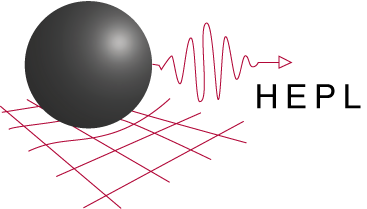News & Events
HEPL-KIPAC Seminar
Monday June 27, 2011
Ward (Chip) B. Manchester
Research Associate Professor
University of Michigan, Dept of Atmospheric, Oceanic and Space Science
The Coupled Evolution of Electrons and Ions in CME Driven Shocks
Abstract: We present simulations of CMEs performed with a new two-temperature coronal model developed at the University of Michigan, which is able to reproduce several features of the observed solar wind with the improved thermodynamics. This model employs heat conduction for electrons, constant adiabatic index (=5/3), and includes Alfven waves to drive the solar wind. In addition, the Alfven waves are dissipated resulting in ion heating. Coulomb collisions low in the corona couple the ions and electrons allowing heat exchange between the two species.
The model includes SOHO/MDI magnetogram data to calculate the coronal field, and also uses SOHO/EIT observations to specify the density and temperature at the coronal boundary by the Differential Emission Measure Tomography (DEMT) method. The Wang-Sheeley-Arge empirical model is used to determine the Alfven wave pressure necessary to produce the observed solar wind speeds.
The new model is much better able to reproduce the solar wind densities. With this model, we study the propagation of CMEs and find correct compression at the CME-driven shock due to the fixed adiabatic index. Most significantly, we find electrons are heated by Ohmic dissipation of the erupting magnetic field, while ions are heated by the CME-driven shock. We find heat conduction by electrons rapidly propagates ahead of the shock front forming a precursor that alters the solar wind ahead of the shock.
Bio: Not Available
Time: 4:00pm – 5:30pm
Location: Physics and Astrophysics Conference Room 102/103
Light refreshments available 4:00pm; Presentation begiins 4:15pm
Open to All


